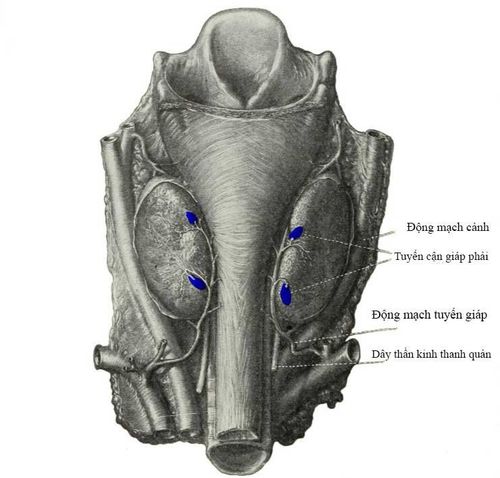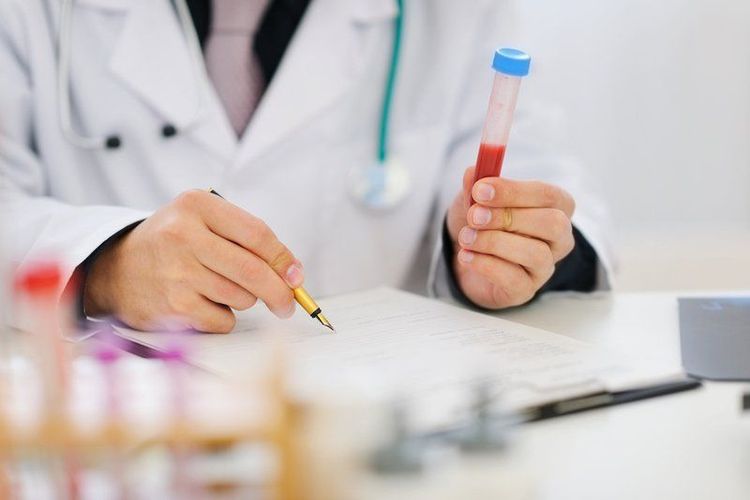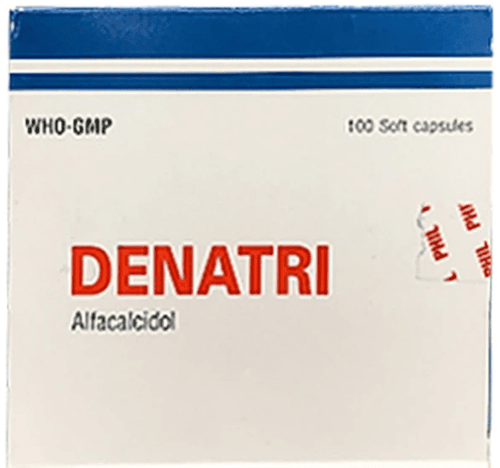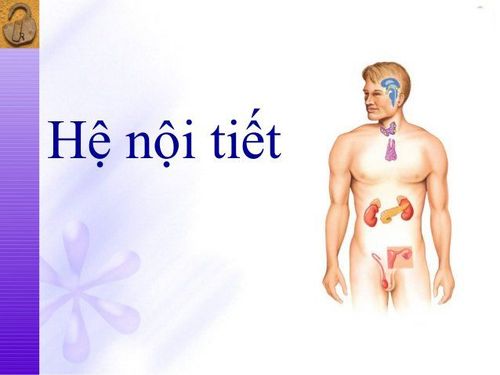This is an automatically translated article.
Posted by Doctor Ngo Van Trung - Laboratory of Laboratory, Vinmec Nha Trang International General Hospital.
Parathyroid hormone (PTH) is a vital hormone of the body, playing a role in regulating the concentration of Ca2+ and phosphate ions (PO43-) in the blood plasma. Under the influence of hormones, the plasma calcium ion concentration increases, but conversely, the phosphate ion concentration decreases.
1. Anatomical features
Location: located just behind the thyroid (2 glands in the upper pole and 2 glands in the lower pole) Size: very small, only about 6x3x2 mm. Quantity: 4 glands for 2 thyroid lobes
Because the parathyroid gland is very small, the color of the gland is very similar to the color of the thyroid gland, so it is difficult to distinguish with the naked eye, so it is easy to remove part or all of the parathyroid gland in the thyroidectomy surgery. . However, only a small part of the parathyroid gland remains, this part will increase cell proliferation to ensure the function of the entire gland.
Structure: The adult parathyroid gland is composed of two types of cells: primary cells and oxygen-loving cells. In which the main cell is the main structural component of the parathyroid gland, the oxygen-loving cell is found only in adults but not in many animals.
Function: the main cells secrete parahormon, while the function of the hypotrophic cells is still unknown.

Giải phẫu học tuyến cận giáp (Parahormon - PTH)
2. Parathyroid hormone (Parahormon - PTH)
Parathyroid hormone (PTH) is a hormone secreted by 4 small glands located at the 2 poles of each thyroid lobe, stored in secretory granules located in the cytoplasm of the main parathyroid cells for release. released into the blood.
Effect of hormones: This is a life hormone of the body, plays a role in regulating the concentration of Ca2+ and phosphate ions (PO43-) in the blood plasma. Under the influence of hormones, the plasma calcium ion concentration increases, but conversely, the phosphate ion concentration decreases.
PTH performs this function by effects on the bones, kidneys, and intestines.
Normal blood levels of PTH are around less than 50 pg/ml. Hormones are excreted more or less depending on the concentration of calcium and phosphate ions in the blood, especially calcium ions. Just a slight decrease in the concentration of calcium ions, the gland will immediately increase hormone secretion, and prolonged hypocalcaemia can cause the gland to enlarge, while the concentration of calcium ions in the blood increases, the activity and size of the gland will decrease.
3. When to test for parathyroid hormone (Parahormon - PTH)?
The test is indicated to evaluate patients with abnormal serum calcium levels and to monitor medical conditions that may have an impact on serum calcium levels (eg, chronic renal failure). Helps diagnose parathyroid gland dysfunction (hyperfunction and hypofunction).

Xét nghiệm hormon của tuyến cận giáp (Parahormon – PTH)
4. How to get parathyroid hormone (PTH) test specimens and what the test results mean
Method of taking samples:
Patients are required to fast for 8-10 hours before taking blood for testing. PTH levels vary throughout the day (peak levels occur around 2 a.m.). Specimens are usually taken around 8:00 am. Normal value of parathyroid hormone (PTH) and some pathological cases
Normal value of parathyroid hormone (PTH): 10-60 pg/ml or 10-60 ng/L. Increased levels of parathyroid hormone (PTH): Common causes
Decreased calcium absorption; Chronic renal failure; Production of PTH out of place; Decreased blood calcium; Women who are breastfeeding; Pregnant; Primary and secondary hyperparathyroidism; Increased urinary calcium excretion (renal hypercalciuria); Rickets; Squamous cell carcirtoma of the lung; Vitamin D deficiency. Decreased levels of parathyroid hormone (PTH): Common main causes:
Autoimmune diseases; Thyrotoxicosis (Baseow's disease); Hypercalcemia; Impaired parathyroid function; Milk-alkali syndrome (mllk-alkaSi syndrome); After parathyroidectomy; sarcoidosis (sarcoidosis); Vitamin A and D poisoning.

Xét nghiệm hormon cận giáp giúp bác sĩ chẩn đoán bệnh chính xác
5. Clinical significance of parathyroid hormone (PTH) test index
The test is useful for diagnosing conditions of hyperfunction and hypoparathyroidism, especially when tests to evaluate phospho-calcium metabolism and renal function (creatinine in blood) are performed concurrently.
When there is an increase in serum PTH and calcium levels, the patient is at risk of medical conditions such as:
Kidney stones due to hypercalciuria; Osteoporosis due to calcium loss of bones; CKD; Hypertension. To register for examination and treatment at Vinmec International General Hospital, you can contact Vinmec Health System nationwide, or register online HERE.
Source: Vietnamese Internal Medicine













